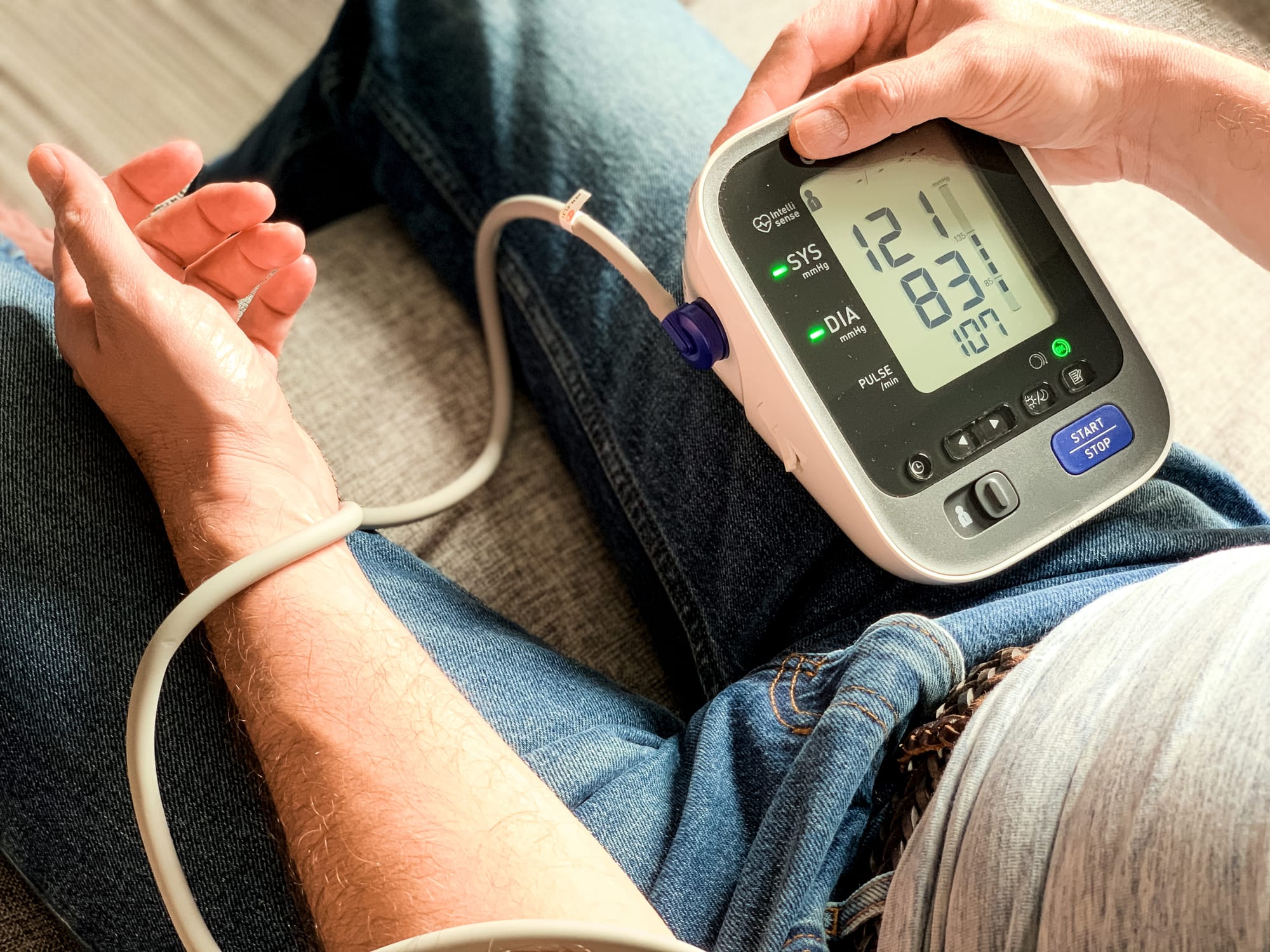From Challenges to Comfort: Palliative Care for Dementia Patients
Practical ways palliative care makes life more comfortable for dementia patients, addressing their physical and emotional needs with care.
Understand blood pressure targets for older adults, why they’re important, and how to manage them safely. Get tips for a healthier, balanced life.

Every visit to the doctor starts the same way: the cuff goes on, it squeezes uncomfortably, and then—numbers. For many older adults, these readings carry weighty implications, hinting at risks for heart disease, memory loss, or even independence itself. But here’s the thing: understanding what those numbers mean isn’t always straightforward. What counts as “good” blood pressure when you’re in your 70s, 80s, or beyond?
It’s not just a medical question—it’s deeply personal. For one person, maintaining lower blood pressure might prevent a stroke. For another, aggressive treatment might mean lightheadedness and falls, a trade-off that feels untenable. These nuances demand more than one-size-fits-all solutions. They call for a careful balancing act between the science of numbers and the art of living well.
In this article, we’ll dive into the complexities of blood pressure management for older adults. Beyond guidelines and studies, it’s about finding targets that don’t just extend life but enhance it—because numbers on a chart are only meaningful when they serve the person behind them.

Before diving into targets, it helps to know what your numbers represent. Blood pressure has two main components:
Doctors use these readings to group blood pressure levels:
If your numbers spike during appointments, blame it on “white coat syndrome”—that surge of nerves some of us feel around doctors. It’s a reminder to track your blood pressure at home for more consistent results. Find a quiet moment, breathe deeply, and let the cuff do its thing.
Aging isn’t for the faint of heart—or arteries. Over time, those once-flexible blood vessels become stiffer, like a rubber hose left out in the sun too long. As arteries lose their elasticity, the heart has to pump harder, raising systolic pressure even if diastolic levels remain steady.
This condition, called isolated systolic hypertension, affects a large chunk of adults over 65. Left unchecked, it can lead to strokes, kidney damage, and even memory loss—a cascade no one wants to face.

If you’ve heard conflicting advice about what your blood pressure should be, you’re not alone. Modern guidelines from the American College of Cardiology and the American Heart Association recommend aiming for less than 130/80 mmHg, as long as the target is achievable without causing side effects.
But stricter isn’t always better. Recent studies like the SPRINT trial found tighter control reduces heart attacks and strokes, but that doesn’t mean it’s suitable for everyone. If you’re juggling other health issues or medications, a more flexible target may keep life simpler—and safer.
Unchecked hypertension isn’t a passive threat; it’s a ticking clock. Here’s what can happen when blood pressure spirals out of control:
Here’s the good news: Lowering blood pressure isn’t about perfection. It’s about consistency. Small, thoughtful steps can transform your health without turning life upside down.
Start with the basics:
Medications are a helpful tool, not a punishment. Work with your doctor to find the right balance, tweaking dosages as your body adapts.

Imagine sitting down with someone who has both hypertension and diabetes—and perhaps a third condition, like chronic kidney disease. Their chart reads like a novel, and their medications can feel like a juggling act. How do you protect their heart without overburdening their kidneys? What if they also have kidney failure and you are unable to recommend the ideal heart treatment because their body simply cannot handle it?
This isn’t just a medical question; it’s a philosophical one. The goal isn’t perfection but equilibrium—finding that delicate balance where treatments don’t compete but cooperate. Adjustments happen in increments, often requiring more patience than precision. In these cases, the numbers are only part of the story. The real challenge is listening to the body’s whispers: a slight change in energy, a hint of dizziness, or even a fleeting complaint from the patient that they don’t feel “quite right.”
Consider an 87-year-old man who prides himself on his independence. He still gardens on good days but avoids stairs when he’s tired. For him, the goal might not be a textbook-perfect blood pressure but one that minimizes risks like falls or fainting spells.
Blood pressure management in the frail isn’t a numbers game—it’s a question of values. What does this person want from their remaining years? For some, it’s mobility; for others, it’s cognitive clarity. Doctors often shift the focus from prevention to preservation, aiming for stability over stringency. And sometimes, the best medicine isn’t a pill—it’s adjusting expectations to meet the patient where they are.

Ask an older adult why they skipped their blood pressure pill, and you might get a dozen answers—some practical, some emotional. Maybe they forgot because the bottle was tucked behind the cereal box. Maybe they’re cutting pills in half because their co-pay shot up. Or maybe they’re simply tired of taking medicine.
These barriers aren’t trivial; they’re quite personal actually. One patient might need a family member to organize their medications weekly. Another might benefit from switching to a once-daily pill. Sometimes, a casual phone call from a pharmacist can solve an issue that a 20-minute doctor’s visit overlooked.
Technology is playing a bigger role, too. From digital reminders to blister packs with days of the week printed boldly on the foil, the tools are there. The real trick is tailoring the solution to the person—not the problem. There's a reason why Amazon purchased PillPack for $1 billion dollars, this is a simple solution to a problem that never goes away.
Behind many successful older patients is someone making it all work: the caregiver. It might be a son who checks his mom’s blood pressure weekly or a neighbor who drives an elderly friend to appointments. These roles often go unnoticed until something slips—a missed dose, a forgotten follow-up—and the gaps become glaringly clear.
Caregivers aren’t just assistants; they’re advocates. They see patterns the patient might overlook: fatigue after a new medication, confusion about dosages, or even an aversion to certain foods that interact poorly with their pills. Educating caregivers about these nuances doesn’t just help the patient—it creates a partnership that can transform outcomes.

When it comes to managing high blood pressure in older adults, the science is far from settled. While current guidelines offer a solid foundation, the nuanced needs of individuals—shaped by age, health conditions, and even personal preferences—demand more precise answers. Researchers are now diving into the complexities of hypertension with a sense of urgency, questioning what “optimal” blood pressure really means and exploring new ways to make treatment more effective and accessible.
Here’s a question researchers are still wrestling with: Should blood pressure targets be the same for everyone over 65, or should they differ based on frailty, cognitive health, and other factors? Emerging studies, like SPRINT Senior, are attempting to answer this.
These studies go beyond generalities. They’re asking questions like, “What’s the best approach for someone with mild dementia? What about a 90-year-old in excellent physical shape?” The answers will likely lead to more individualized guidelines, moving away from one-size-fits-all medicine.
New treatment options are on the horizon, and they’re not all about medication. Take renal denervation, for example—a procedure that calms overactive kidney nerves contributing to high blood pressure. For patients who can’t tolerate drugs or struggle with adherence, this could be what makes the difference.
Meanwhile, researchers are working on medications that do more than lower blood pressure. We may see a pill that also reduces arterial stiffness or reverses inflammation in blood vessels. These aren’t just theoretical concepts—they’re in clinical trials.
If there’s one phrase dominating the future of hypertension care, it’s personalized medicine. The idea isn’t just about choosing the right drug; it’s about tailoring every aspect of care to the individual.
Imagine a world where a simple cheek swab reveals which medications are most likely to work for you, avoiding the trial-and-error that frustrates so many patients. Or picture a smartwatch that not only tracks your blood pressure but predicts spikes before they happen, allowing you to adjust your routine preemptively.
AI is playing a surprising role here, too. By analyzing millions of patient outcomes, algorithms can predict which treatments are likely to succeed based on your health history. It’s not about replacing doctors—it’s about giving them sharper tools to work with.

Every patient is unique, and every case brings its own complexities. For a doctor, balancing these factors—patient history, test results, medication options—can feel like trying to navigate a maze blindfolded. AI, in its most useful form, acts like a guide. It doesn’t walk the path for you, but it shines a light on turns you might not have seen otherwise.
Take hypertension care. AI can analyze thousands of similar cases to suggest treatments tailored to a patient’s specific needs. Maybe it highlights that people with kidney concerns and slightly elevated systolic pressure have responded well to a less commonly prescribed drug. It’s not magic; it’s methodical, data-driven support.
Still, let’s not over-romanticize it. AI can spot patterns in spreadsheets, but it doesn’t know the patient sitting in front of the doctor—the way they clutch their hands when they’re nervous, or their hesitance to try yet another medication. That’s where human insight comes in. AI provides the framework, but it’s the doctor who brings the soul to the decision-making process.
If you’ve ever tried to manage high blood pressure, you know the frustration of inconsistent readings. At the doctor’s office, your numbers might look fine. At home, they spike. By the time you’ve scheduled a follow-up, the pattern is gone. It’s like chasing shadows.
This is where wearables and AI step in, turning those shadows into something you can actually see. These devices don’t just record your blood pressure—they analyze it, looking for trends. Maybe they notice your readings tick upward every time you skip your afternoon walk or reach for a salty snack. With AI, those patterns aren’t just data points; they’re a story, one you and your doctor can act on before it’s too late.
This isn’t about handing control over to technology. It’s about clarity. AI won’t decide what you should do next, but it gives you and your doctor better tools to figure it out together.

Treating hypertension isn’t just about lowering numbers. For patients with overlapping conditions—diabetes, kidney disease, or heart failure—it’s about managing a delicate balance. Push too hard on one side, and another system might falter.
Here, AI excels as a collaborator, not a commander. It sifts through layers of data—clinical guidelines, patient history, lab results—to offer suggestions, not orders. Say a medication is flagged as effective for hypertension but potentially risky for kidney health. AI doesn’t eliminate the decision; it simply informs it, giving the doctor options they might not have considered otherwise.
But AI isn’t perfect. It doesn’t know that a patient feels overwhelmed by too many pills or that they’ve skipped doses because of side effects they were too embarrassed to mention. That’s where doctors earn their stripes—not by crunching data, but by listening, asking the right questions, and finding a way forward that works for the individual, not just the algorithm.